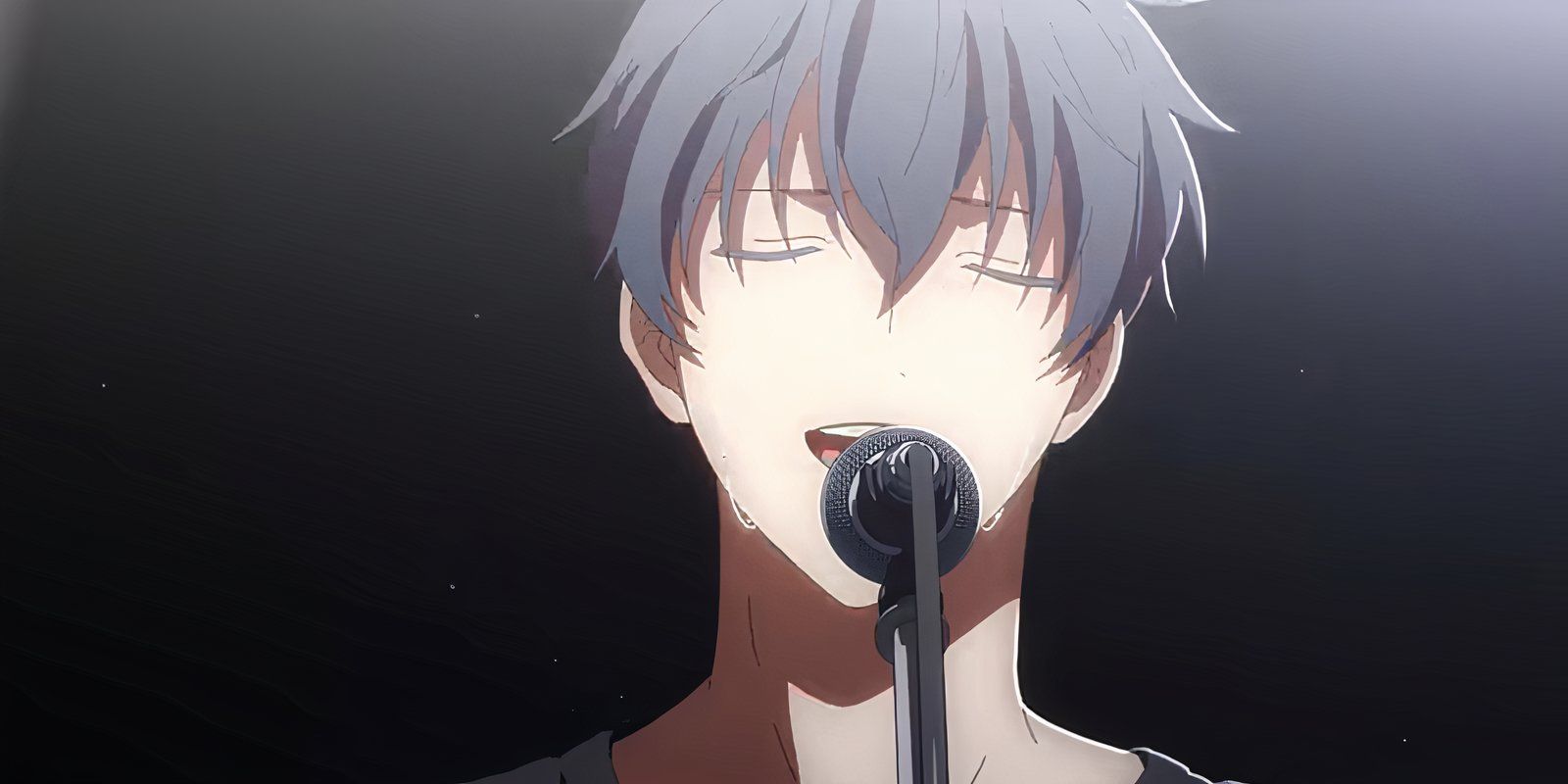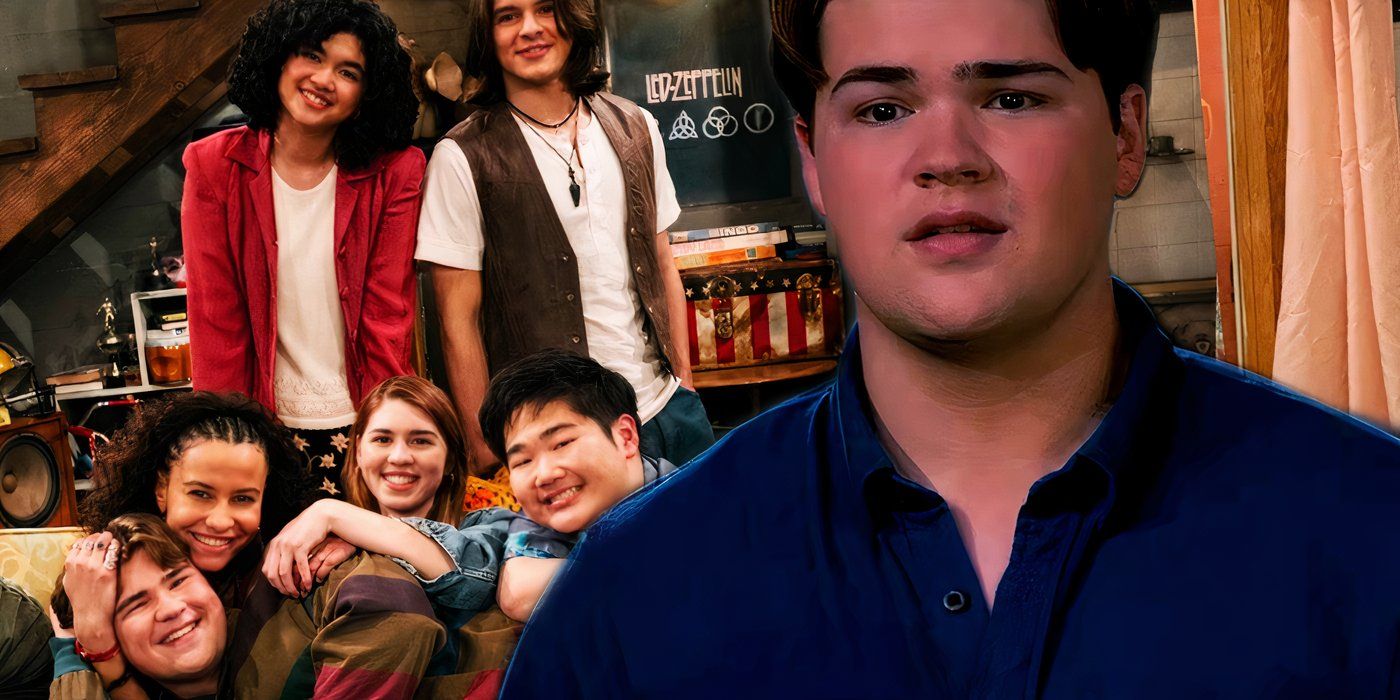Downward Spiral: Horus Station – a space-based puzzler and shooter game – is the first major title from Finnish developer/publisher 3rd Eye Studios, which was only founded two years ago and is comprised of film, music, and video game industry veterans. Each of those developers are looking to build “atmospheric and sophisticated games,” according to the studio’s mission statement. And, in that regard, they have succeeded doing so with Downward Spiral: Horus Station, but it comes with a cost.
From the start, players are launched into a scenario in which they must restore power and sustainability to Horus Station – a derelict and long forgotten space station – by getting each main sector (Engineering, Maintenance, etc.) back online, all the while combating the station’s security drones. It’s a space-based puzzle game with a first-person shooter element that’s designed with VR in mind. And what’s special about Downward Spiral: Horus Station is that it has a little bit of everything for all types of players, such as an atmospheric single-player story that can also be played cooperatively (which may be recommended in particular situations) as well as VR capabilities. Plus, there’s an option to either “Engage” or “Explore” the story, meaning playing with or without enemies.
Related: Smoke and Sacrifice Review: Drain The Swamp
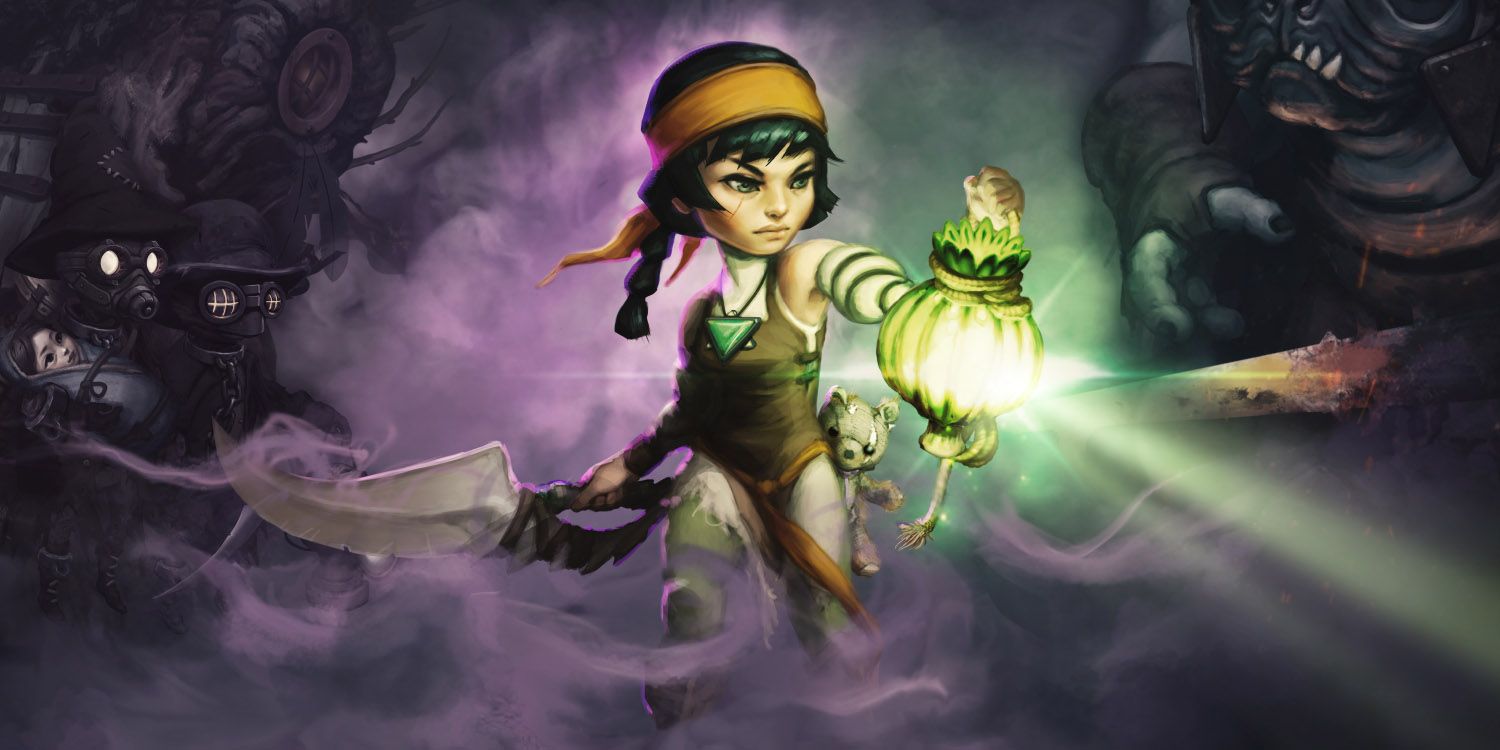
It takes a minute to get used to the zero-gravity control system, but that’s all part of the game’s intrigue and what makes it stand out from the crowd, especially among VR titles. To make things easier, players equip a grappling tool in their left-hand and a weapon in their right hand towards the start of the game. While the weapon is only needed if players select the “Engage” mode, the grappling tool is invaluable in the game. Without it, it would be far too tedious to traverse the map. And, thankfully, players are able to get a far faster grappling tool at a later point. Otherwise, traveling would again become quite tiresome and, well… boring.
Downward Spiral’s Story… There Really Isn’t One
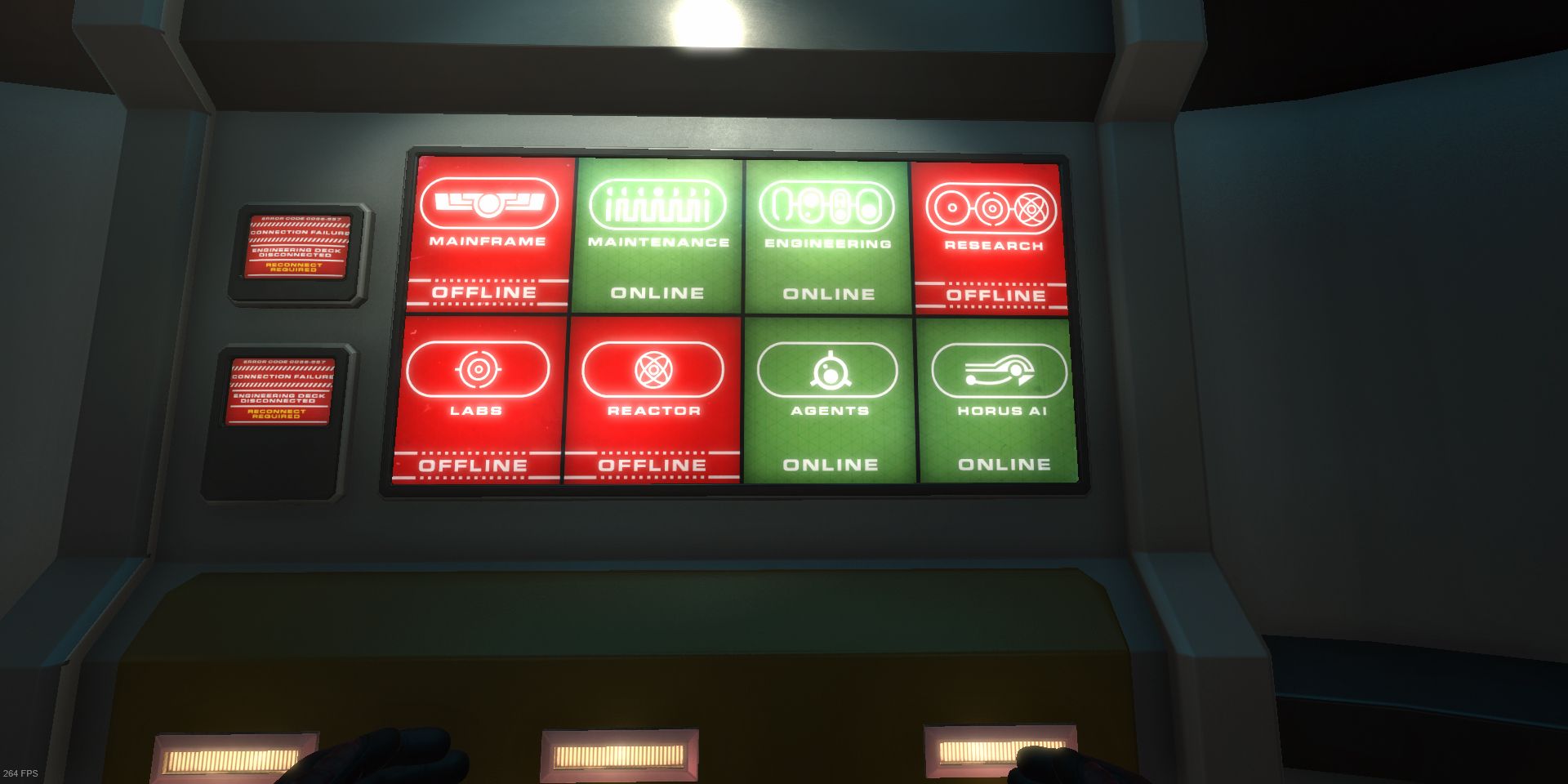
Throughout the campaign, players are left to figure out what to do on their own without any overt instructions, but it doesn’t take long to realize that the objectives are listed on the TV screens in most rooms. From there, it’s a matter of finding where to go, seeing as the only map/layout of the facility is located on the walls in certain sectors. The idea is to tell a story through gameplay – meaning no cinematics or cutscenes, along with no dialogue – which is difficult to do and isn’t always properly conveyed in Horus Station. Aside from finding a few lifeless bodies floating about, there isn’t much of a story to experience. Really, the game is more of an execution of concept than anything else – and that’s not necessarily a bad thing since it’s meant to be a VR game – and its zero-gravity gameplay is interesting enough to keep players going but it’s not enough to thoroughly impress.
Downward Spiral: Horus Station is broken up into eight acts – a roughly four to five-hour campaign depending on how long players choose to explore – which becomes repetitious after completing the first chapter. After all, the entire story is about bringing the space station back online. There’s really only one way in which players can go about doing that. Although Horus Station attempts to be challenging from time to time, its eight-act campaign is simple enough to be completed in one or two sittings. And considering that not a single word is spoken throughout the entire story, it’s quite a relaxing game, with little frustration arising from the menial tasks players are required to perform, which may be viewed more as a proof of concept (for zero gravity play) rather than a worthwhile story to work through. If it wasn’t a completion screen, players may not realize that they’ve finished one act and begun another.
Downward Spiral’s Gameplay Is Immersive But Repetitive
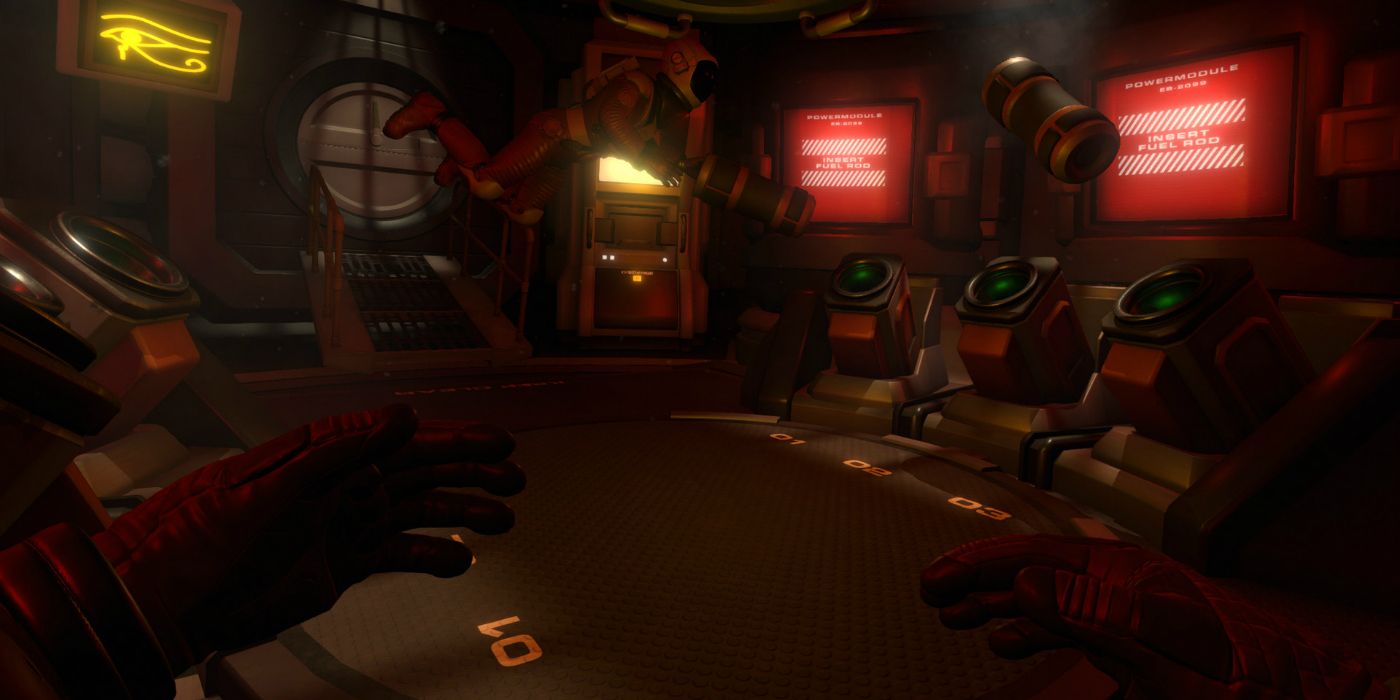
There is a sense of immersion that comes with the environment and sound effects. However, since the music – which is a Blade Runner-esque soundtrack composed by HIM frontman Ville Valo – is only used in combat sequences, the sound of the grappling tool can become an annoyance after some time. An ambient noise might sacrifice immersion, but it could also increase replayability. As for looks, Downward Spiral: Horus Station‘s graphics and art assets are minimalistic (which makes sense considering it’s an indie title), but they are still quite impressive – and the game itself runs smoothly even on ultra settings, with the only significant frame-rate drops occurring whenever players open a door to a new area. But overall, there are enough artistic highlights in the game to make the space station truly feel like an abandoned facility without introducing an expected horror aspect.
Related: Detroit: Become Human Has Heart, But Lacks a Great Story
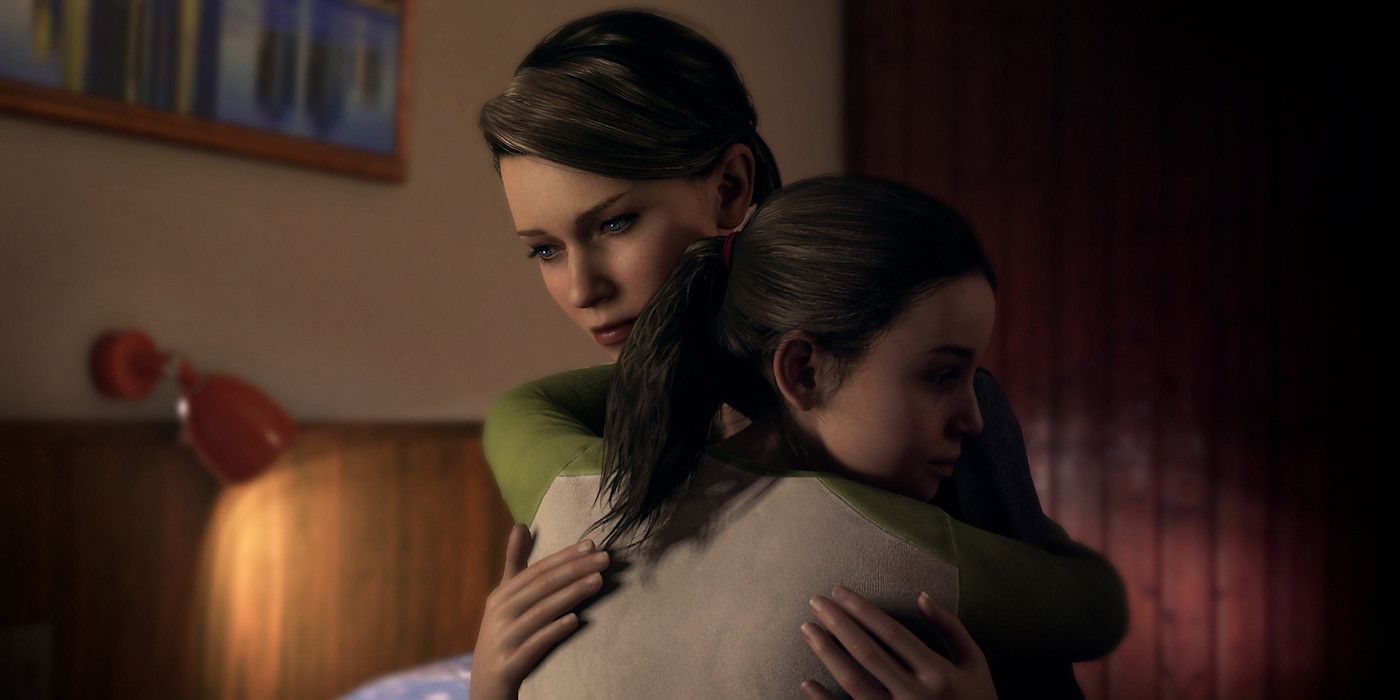
But while the game is immersive, especially for a VR title, the gameplay is not without flaws. Unfortunately, there are some environmental setbacks whenever using the grappling tool and one particular glitch – in which one or both items (and arms) disappear, which come back either after grabbing a wall or simply dying – can occur when resuming a game after pausing. The grappling tool may also get stuck facing one direction, in which case the game may need to be reset.
In conclusion, Downward Spiral: Horus Station‘s selling point is its zero-gravity traversal aspect, but the mechanic can be improved upon in terms of execution, specifically with regards to momentum and environmental controls. One thing that would benefit players greatly is being able to increase momentum by lunging off walls and railings instead of just letting go and floating at an unbearably slow pace. Of course, that’s where the grappling tool comes in handy, but that can only extend so far and increase speed so much. And when it comes to a game in which the vast majority of time is consumed by simply going from point A to point B, a bump in speed would be very much welcomed.
In the end, once players have completed the story (or aren’t interested in playing the campaign anymore), they can test out their zero gravity fighting skills in multiplayer, in either an eight-player PvP or PvE mode – and that’s where the real fun begins… for a short amount of time, in all honesty. One thing is for sure, though, a Dead Space game with Downward Spiral‘s zero-gravity mechanics would be a glorious nightmare for space horror fans.
More: E3 2018 Press Conference Schedule & Where To Watch

Downward Spiral: Horus Station is now available on PC. A code was provided for review.
